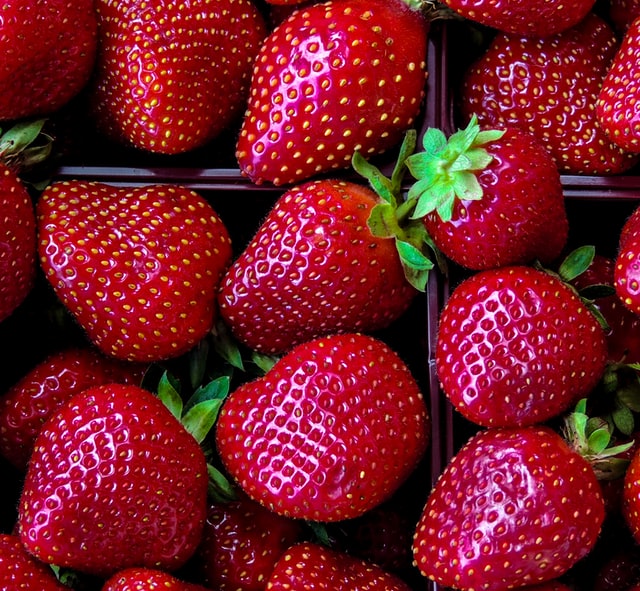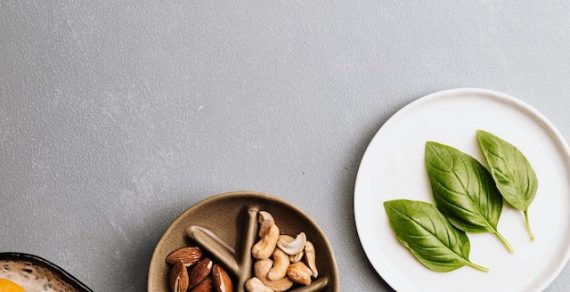Strawberries; Origin history, the difference between forest and gooseberry. Description, biological characteristics, traditions. 30 interesting facts.
Strawberries are a tasty and healthy berry known to the ancient Greeks, who used them to treat respiratory ailments. Now it is no longer possible to determine where the bushy shrubs with rounded leaves and thin stems leaning to the ground settled in the world. But it is difficult to find a person who has never eaten a sweet berry in his life, which earned the Romans the nickname “fragrant” for its wonderful aroma. Here are 30 interesting facts about strawberries that will surely surprise you!
Table of Contents
Differences between forest and garden berries
Strawberry is a perennial plant from the rose family. As a rule, its highly branching bush rises 10-25 cm above the ground. It annually grows long shoots, which are popularly called antennae. They establish themselves in neighboring plots, take root, and form new rosettes. The strawberries settle further and occupy new areas.
White flowers with five petals with a slightly noticeable pink or yellowish tinge appear on the bushes from the end of May – the beginning of June. After 30 days, sweet berries ripen with a barely noticeable pleasant acidity, in the aroma of which the taste buds get notes of floral honey and musk.
Attention! An exciting description of strawberries with their bright aroma was by the American writer Dmitry, who passionately loved nature: “It seems that somewhere a sugar jam from a bouquet of roses, honey, apples, and pineapples has boiled and evaporated.”
Low-growing strawberry bushes prefer to grow in shady places, ravines, at the edge of the forest, so it is sometimes difficult to find them among other plants. Even so, a fastidious plant can do well in a field warmed by the sun, on the banks of rivers, and in the mountains, although the work of berry growers will hardly make it easy. Do you remember the Soviet cartoon “The Pipe and the Jug”? His hero is entirely understandable! Red, dark pink, and cream drop strawberry fruits are usually hidden under the leaves and literally “sink to the ground,” so you have to spend a lot of time and effort looking for them.
Unlike the wild berry, the garden has marked ancestors:
- Virgin strawberries are delivered to Europe from North America;
- Once found chile strawberry with her in the same park.
As the legend goes, please create a new plant, its offspring now flourishing in our gardens and vegetable gardens from accidental cross-pollination (and possibly the deliberate work of gardeners). Cultivated strawberries are distinguished by large fruits that reach 20 and even 50 g in weight against the modest 5-6 g of wild berries and are located above the leaves, facilitating the collection of strawberries.
Interesting! Garden strawberries do not tolerate the beds on which tomatoes, potatoes, cucumbers, or cabbage grew before. Still, at the same time, they perceive the land that provided peas, garlic, or parsley with dill very nicely.
The origin of the strawberry plant
The facts about strawberries are so tightly intertwined with assumptions and guesses that it is almost impossible to distinguish one from the other today. And yet we will try to reveal some secrets of sweet beauty.
7 interesting facts about traveling around the world:
- Forest strawberries have been known to humanity for a long time. Archaeologists have discovered ancient fossilized remains of berries, which are more than 60 million years old. It is how strawberries grew on our planet during the time of the dinosaurs.
- According to the first theory, it brought the plant to Europe from the New World, and thanks to the colonists, it became trendy. Another version says that the berries come from Southeast Asia.
- Cultivation of the culture at home began at the end of the 15th century. Until that time, I ate only wild berries.
- Scientists made a description of strawberries in the middle of the 16th century. Today, more than 600 plant species are known.
- Wild strawberries owe their appearance in America to Peter I’s father, Tsar Alexei. He never missed an opportunity to plant curiosities in his gardens and his gardener Trifon. Little Petrusha was so fond of sweet berry delicacies that when he grew up, he ordered to send plants for propagation to Azov; he especially characterized the “strawberry root” – strawberry plants.
- But the first garden strawberry that came to America was the large-fruited Victoria, which reached us only in the 20th and gained so much popularity that in some places, the plant with rich red berries is still called Victoria.
- An interesting fact about strawberries: in recent decades, they have been widely used in landscape design. For example, fluffy bushes, here and there, decorated with fiery spots of berries, look good in decorative flower beds, and mixing tables, work successfully as colorful borders to decorate garden paths, and are highly effective in compositions for hanging pots.
An engaging botanical description of strawberries
Did you know that strawberries are cheaters? Yes, she only gave up being bare all these centuries, having in her pedigree … a tree.
TOP-9 type characteristics of strawberries:
- In everyday life, strawberries are called berries, but we are dealing with overgrown containers; it is a false fruit. The actual fruits of the plant are seed nuts on its surface, which are small in size.
- The strawberry genome is one and a half times more complex than humans.
- Anthocyanin pigments provide the red color of strawberry fruit. Still, they are not used as food colors because of their ability to react unpredictably to the environment’s acidity. If you eat a dessert with strawberry or strawberry filling, it is most likely colored with beet dyes.
- After breaking down the aroma of strawberries into its components, scientists counted about 15 volatile compounds, including herbs, flowers, fruits, and even caramel. Most of all, the scientist was struck by the smell of … hard oil. And only in the right combination do they give the same fragrant, tempting aroma.
- Strawberry flowering in the forests of central Russia lasts from mid-May to mid-July. Therefore, the collection is carried out for 2 months, almost the entire summer. Sometimes the plant bears a lot of fruit, even before the first frost.
- The exciting thing about strawberries is that their relative is the apple tree.
- Surprisingly, strawberries do not grow in one place for more than 5 years. She can move by using her antennae to do so. Moving in this way will increase each time in a new area.
- A wild plant can be transported from the forest to the local area. As the growing strawberries in your garden improve, the berries will ripen larger.
- Another interesting fact about wild strawberries: they smell much more intense than gooseberries. In the selection process, we paid particular attention to the characteristics of berries that have a practical benefit, such as frost resistance or size. The smell, unfortunately, was not included in this list.
Traditions and distribution of strawberries in the world
From the time strawberries entered the daily life of humanity, they managed not only to appreciate and love them but also to make them the main character of many curious customs.
8 interesting facts and unusual properties attributed to strawberries:
- In the old days, it was believed that a belt woven from the leaves of a plant would protect against snakes. Dry leaves hidden in a purse will attract money, and a bunch of several stems tied with a pink ribbon will bring good luck to the house if you leave it in the hallway in front of the front door.
- Many believed that it would surely come true if the strawberries gathering were silent and thinking about the affection.
- In America, there was a fascinating tradition associated with strawberries. It was not accepted to eat the first berry by yourself. Relatives and neighbors treated her. They believed that the plant would not translate this way, and it would begin to bear fruit a lot in the future.
- An exciting strawberry ceremony is offered during the Brazilian Carnival, which is held annually. The berries are scattered around them, hoping such actions will help increase wealth and well-being.
- An interesting fact about strawberries is that they have their unofficial funding. It is Version in Belgium, where the plant is grown by almost everyone. They like to surprise foreigners with an original recipe for making ripe strawberries. It is generously sprinkled with lemon juice, sprinkled with white pepper, and eaten with gusto. There is also a collection of sweet berries, where visitors are told many interesting things about its origin and cultivation, show an excellent variety with white fruit and pineapple flavor, and also offer delicious souvenirs – jam, sweets, candied fruits, strawberry liqueur, and even beer.
- Another dish called “Eton Disorder” is trendy among players and visitors to the Wimbledon tournament. Strawberries, crushed and mixed with cream, are consumed here, without exaggeration, in tons – up to 27 within 2 weeks, according to statistics.
- Since 1900, the delicious berry has been officially registered as the savior and official symbol of the American town of Pasadena, whose residents have guessed to plant strawberries in the fields with the crops destroyed by the hurricane and avoid starvation.
- If you want to visit the strawberry museum but don’t plan to visit Belgium’s Vepion yet, check out Russia’s Saratov. There is also a museum of fragrant berries, which has more than 600 exhibits, competitions for the best crafts are held, and excursions with exciting facts for schoolchildren about strawberries and strawberries are updated regularly. Animation and display of berries included!

Interesting properties of strawberries
Like all edible berries, strawberries are full of vitamins and medicinal. It is not without reason that its fruits and leaves were widely used in their work by unknown village healers and such pillars of ancient medicine as Hippocrates and Avicenna! Of course, consuming wild food without reason and measure cannot lead to anything good.
6 functional and dangerous properties of bright strawberries:
- Regardless of the strawberry variety, the plant’s fruits are potent allergens. Therefore, it is worth eating them in moderation.
- The strawberry plant has excellent beneficial properties known since ancient times and is used in preparing traditional medicine. Because there are substances in berries similar to aspirin, they can use berries to fight headaches.
- Interestingly, strawberries contain copper. This mineral is known for its ability to stimulate collagen production. For this reason, the berry is suitable for preparing face masks that can replace expensive cream.
- Not only berries are considered valid, but also strawberry leaves, primarily due to the content of an impressive amount of ascorbic acid. It is indicated in the treatment of colds.
- Roses and roots of the plant are also very useful. They have anti-inflammatory properties and can stop the blood. They can also have a diuretic and choleretic effect on the human body.
- Strawberry leaf tea is a powerful immune booster, digestive, and anti-aging agent. The main thing is not to abuse it.
Conclusion
And finally, it’s important to remember that you can give neither forest nor homemade strawberries to children under the age of 1. Some of its ingredients are too rough for children’s sensitive stomachs, which can cause colic.




